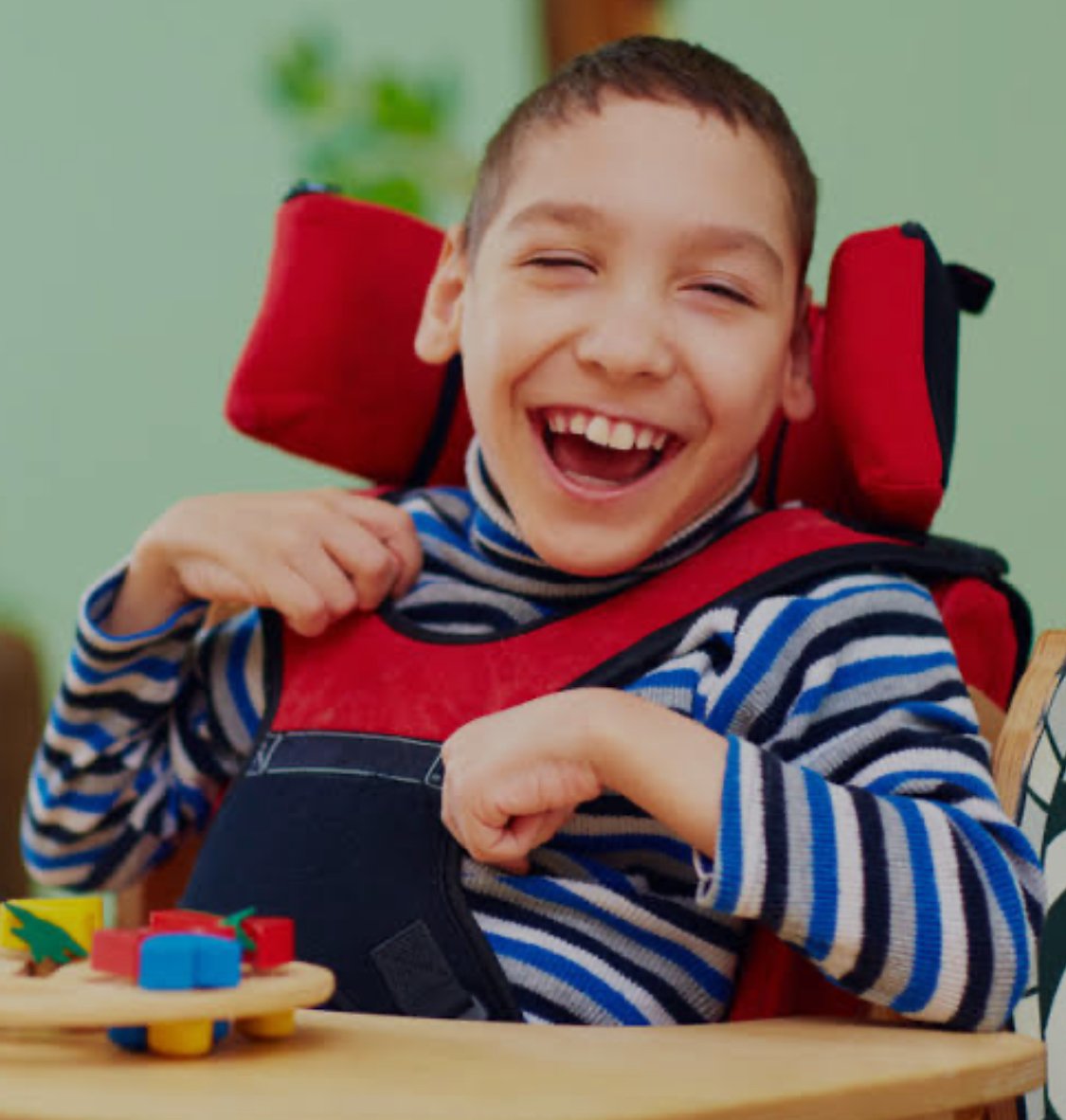CEREBRAL PALSY
Cerebral palsy (CP) is a group of permanent movement and posture disorders caused by non-progressive disturbances in the developing fetal or infant brain.

CP or child palsy affects body movement, muscle control, muscle coordination, muscle tone, reflex, posture, and balance. REHABILITATION for individuals with cerebral palsy focuses on maximizing independence, improving quality of life, and addressing specific physical, cognitive, and social challenges.
Goals of Rehabilitation for Cerebral Palsy
1. Enhance Mobility: Improve the ability to move and perform daily activities.
2. Increase Strength and Coordination: Strengthen muscles and improve coordination to facilitate movement.
3. Improve Functional Skills: It Improves everyday life skills like Eating, Dressing, and Communicating.
4. Promote Independence: Enable individuals to participate in school, work, and community activities.

5. Manage Pain and Discomfort: Address pain, discomfort, or muscle spasms associated with CP.
6. Support Family and Caregivers: Provide education and support to families and caregivers.
Key Rehabilitation Approaches
1. Physical Therapy (PT)
– Goals:
Improves motor skills
Enhance mobility
Increase strength and flexibility
and Manage spasticity.
– Techniques:
– Stretching and Strengthening Exercises: To improve muscle tone and flexibility.
– Gait Training: To assist with walking and balance.
– Use of Assistive Devices: Such as braces, walkers, and wheelchairs to aid mobility.
2. Occupational Therapy (OT) For Cerebral Palsy
– Goals: Improve daily living skills, enhance fine motor skills, and promote independence.
– Techniques:
– Activities of Daily Living (ADLs): Training in tasks such as dressing, grooming, and eating.
– Fine Motor Skills Development: Activities to improve hand-eye coordination and dexterity.
– Adaptive Equipment: Use of tools and devices to facilitate independence in daily tasks.
3. Speech and Language Therapy For Cerebral Palsy
– Goals: Improve communication skills, address speech and language delays, and manage feeding and swallowing difficulties.
– Techniques:
– Speech Exercises: To improve articulation and clarity.
– Language Development Activities: To enhance vocabulary and communication.
– Alternative Communication Methods: Use of sign language, picture boards, or communication devices.
4. Orthopedic Interventions For Cerebral Palsy
– Goals: Correct or manage musculoskeletal deformities, improve function, and reduce pain.
– Techniques:
– Surgical Interventions: Procedures to correct bone and joint deformities or release tight muscles.
– Orthotic Devices: Use of braces and splints to support affected limbs and improve posture.
5. Medications For Cerebral Palsy
– Goals: Manage spasticity, reduce pain, and control seizures.
– Types:
– Muscle Relaxants: Such as baclofen or diazepam.
– Botulinum Toxin Injections: To reduce localized muscle spasticity.
– Anti-Seizure Medications: For individuals with co-existing epilepsy.
6. Behavioral and Psychological Support
– Goals: Address emotional and behavioral challenges, improve social skills, and support mental health.
– Techniques:
– Counseling and Therapy: Individual or group therapy to address emotional well-being.
– Behavioral Interventions: STRATEGIES to manage challenging behaviors and enhance social interactions.
Multidisciplinary Approach
Effective rehabilitation for cerebral palsy often involves a multidisciplinary team of healthcare professionals, including:
– Physiotherapists: To focus on physical rehabilitation and mobility.
– Occupational Therapists: To enhance daily living skills and independence.
– Speech and Language Therapists: To improves COMMUNICATION and FEEDING skills.
- – Orthopedist Surgeons: To address musculoskeletal issues.
– Neurologists: To manage neurological aspects of CP.
– Psychologists and Counselors: To support mental health and behavioral challenges.
– Social Workers: To provide support and resources for families.
Family and Caregiver Involvement
Families and caregivers play a crucial role in the rehabilitation process. Their involvement can – Education and Training: Learning about CP and how to support the individual’s needs.
– Education and Training: Learning about CP and how to support the individual’s needs.
– Home Exercises: Carrying out recommended exercises and activities at home.
– Advocacy: Advocating for appropriate services, support, and accommodations in educational and community settings.
Conclusion
Individuals with cerebral palsy (CP) can fully realize their potential and engage in community activities with the help of physical, occupational, and speech treatments, medical interventions, and psychological support. Families, caregivers, and medical experts must work together to ensure a thorough and effective REHABILITATION STRATEGY .
